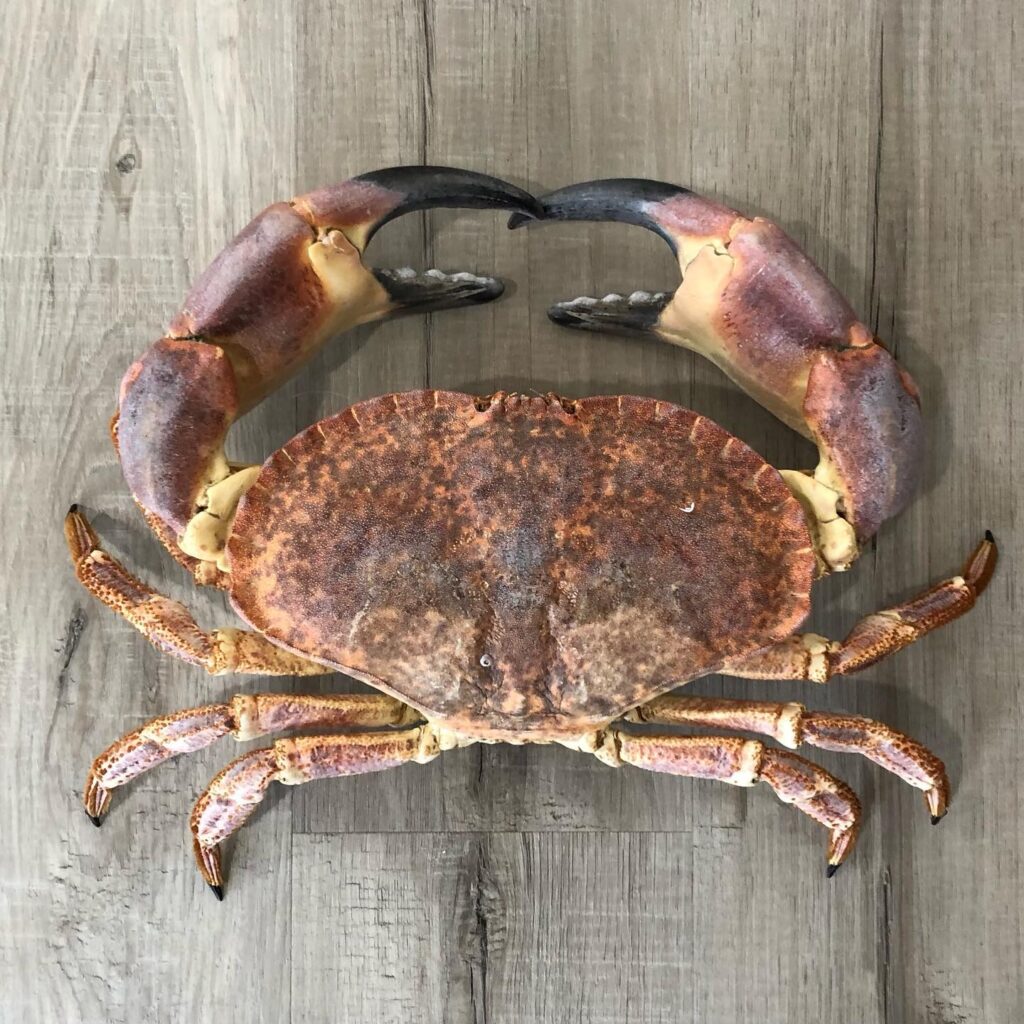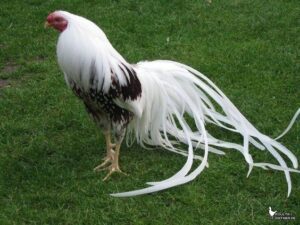Crabs are fascinating, aren’t they? These little scuttling creatures come in all shapes and sizes, but did you know some of them grow to mind-blowing proportions? We’re not just talking about the ones you spot on the beach during a family vacation—oh no, some of these crabs are absolute giants! Stick with me as we dive into the top 10 largest crabs in the world. Trust me, by the end of this, you’ll be amazed at how enormous some of these creatures can get.
 Pin
Pin Image source Instagram: @boxofodditiespodcast
Table of Contents
1. Japanese Spider Crab (Macrocheira kaempferi)
 Pin
Pin Photo by Lycaon (Hans Hillewaert,) via Wikimedia Commons
Let’s kick things off with the undisputed heavyweight champion of crabs: the Japanese Spider Crab. A creature with legs so long they could span a small car—up to 12 feet from claw to claw! These crabs aren’t just big; they’re ancient-looking, almost like relics from a prehistoric world.
Weighing up to 40 pounds, they dominate the depths of the Pacific Ocean, typically hanging out around Japan at depths of 1,000 feet.
Despite their size and spidery appearance, they’re surprisingly docile. These crabs are scavengers, meaning they’re more interested in cleaning up the ocean floor than hunting down prey. Their long legs, though intimidating, are delicate and can break easily. However, they do have powerful pincers capable of crushing shells with ease.
What’s really fascinating is their lifespan—these gentle giants can live for over 100 years, making them one of the longest-living marine species. Their age and size make them a symbol of resilience in the ocean. But beware, they’re also a delicacy in Japan, so their population is carefully monitored. Seeing one up close would feel like meeting a living legend of the sea!
2. Tasmanian Giant Crab (Pseudocarcinus gigas)
 Pin
Pin Image source Instagram: @liquid_action_films
Next, let me introduce you to a true tank of the ocean—the Tasmanian Giant Crab. Found in the chilly waters off southern Australia and Tasmania, this crab is a heavyweight contender. The males can weigh up to 29 pounds, while females, though smaller, are equally formidable.
One glance at this crab, and you’ll notice something fascinating—its claws. The right claw is massive and built for crushing, while the left claw is smaller and more suited for delicate tasks like cutting. Talk about a versatile toolset! These claws are so strong they can crack through even the toughest shells, making the Tasmanian Giant Crab a force to be reckoned with.
These crabs dwell at depths of 400–600 feet, living a solitary life on the seafloor. What’s particularly interesting is their molting process. As they grow, they shed their hard exoskeleton, leaving them vulnerable until the new shell hardens. But once they’re fully armored, they’re practically invincible.
Though they’re a prized catch for commercial fisheries, their slow growth and long life make them vulnerable to overfishing. Seeing one in the wild is a rare and humbling experience, as these crabs truly embody the power and mystery of the deep.
3. Coconut Crab (Birgus latro)
 Pin
Pin Image source Instagram
A crab that doesn’t just crawl on the ground but climbs trees. That’s right—the Coconut Crab is a land-based giant that can scale coconut palms with ease. With a leg span of up to 3 feet and weighing up to 9 pounds, it’s the largest terrestrial arthropod on the planet.
These crabs are famous for their incredible strength. Their claws are so powerful they can crack open coconuts, which isn’t an easy feat even for humans with tools. They’ll also eat fruit, nuts, and even small animals. Basically, if it’s edible and within reach, it’s fair game for the Coconut Crab.
But the coolest thing about them? They’re expert climbers. They use their strong legs to scale trees, sometimes even dragging coconuts down to the ground for an easier meal. Seeing one clinging to a tree trunk is both awe-inspiring and a little eerie—these crabs are like something out of an adventure movie.
Found on islands across the Indian and Pacific Oceans, they’re a vital part of the ecosystem, recycling nutrients and cleaning up organic waste. And with a lifespan of up to 60 years, they’re in it for the long haul.
4. Alaskan King Crab (Paralithodes camtschaticus)
 Pin
Pin Image source Instagram: @charwoodward
When you think of seafood royalty, the Alaskan King Crab probably comes to mind. Known for its delicious meat, this crab is also one of the largest in the world. With a leg span of up to 6 feet and weighing up to 24 pounds, it’s no wonder these crabs are a prized catch.
They’re found in the icy waters of the Bering Sea, thriving in some of the harshest conditions imaginable. These crabs are bottom-dwellers, scavenging for food on the seafloor. Their long legs and powerful claws make them highly efficient predators and scavengers.
But here’s the thing—the journey to catch them is nothing short of perilous. The Alaskan crabbing industry is infamous for its danger, with fishermen braving freezing temperatures and rough seas. It’s a high-stakes game, but the reward is worth it, as Alaskan King Crab meat is considered a luxury delicacy worldwide.
What’s truly remarkable is their role in the ecosystem. As scavengers, they help clean the ocean floor, contributing to the balance of marine life. They’re not just giants; they’re guardians of their underwater realm.
5. Red King Crab (Paralithodes platypus)
 Pin
Pin Image source: Wikimedia
Meet the Red King Crab, a close cousin of the Alaskan King Crab and just as impressive. These crabs can weigh up to 24 pounds and have legs that stretch up to 5 feet. Their bright red shells make them easy to spot, and their size? Let’s just say they don’t hide very well.
One of the most fascinating things about Red King Crabs is their migration. They gather in massive groups and march across the seafloor in what looks like a crab army. Imagine thousands of these giants moving together—it’s both mesmerizing and a little intimidating.
Found in the cold waters of the North Pacific, these crabs are a staple of the fishing industry, prized for their sweet, tender meat. However, their popularity has led to strict regulations to prevent overfishing.
Their unique ability to adapt to various depths, from shallow coastal waters to deeper zones, makes them versatile survivors. Whether they’re marching in formation or foraging for food, Red King Crabs are a testament to the beauty and resilience of marine life.
6. Giant Mud Crab (Scylla serrata)
 Pin
Pin Photo by CSIRO via Wikimedia Commons
Let’s take a trip to the mangroves to meet the Giant Mud Crab, a heavyweight champion of coastal waters. These crabs, also called “black crabs” in some regions, can weigh up to 6 pounds and boast a shell width of about 9 inches. While they’re smaller than some of the deep-sea giants, they make up for it with their adaptability and personality.
Giant Mud Crabs are native to the warm waters of Southeast Asia, Australia, and parts of Africa. What sets them apart is their ability to thrive in both saltwater and freshwater environments. This versatility has made them a staple in the seafood industry, especially in dishes like Singapore’s famous chili crab.
These crabs are not just about size—they’re also highly aggressive when threatened. With claws strong enough to snap through shells, they don’t take kindly to being disturbed. Despite their intimidating nature, they play an essential role in their ecosystem, keeping the mangroves clean by feeding on decaying matter.
Whether you see them on your plate or scuttling through a muddy estuary, Giant Mud Crabs are a testament to nature’s incredible adaptability and strength.
7. Blue Crab (Callinectes sapidus)
 Pin
Pin Photo by James St. John via Wikimedia Commons
The Blue Crab might not win any size competitions against the giants on this list, but it more than makes up for it with its striking appearance and feisty attitude. Found along the Atlantic coast of the Americas, these crabs are easily recognized by their vibrant blue claws and olive-green shells.
Although smaller, with a shell width of about 9 inches and leg spans over 1.5 feet, these crabs are incredibly agile. They’re so quick and aggressive that catching them often feels like an extreme sport. They’ll dart sideways, snap their claws, and put up a fight that’s wildly disproportionate to their size.
Blue Crabs play a significant role in the ecosystems of estuaries and marshes. They’re omnivorous, munching on plants, small fish, and detritus, helping to maintain a balanced ecosystem. However, they’re also a popular delicacy, especially in dishes like Maryland crab cakes and steamed crab feasts.
Their combination of beauty, speed, and culinary importance makes Blue Crabs one of the most iconic species of the Atlantic. While they’re smaller than other crabs on this list, their impact is anything but small.
8. Dungeness Crab (Metacarcinus magister)
 Pin
Pin Image source Instagram: @bcseafoodalliance
Next, let’s talk about the Dungeness Crab, a West Coast favorite known for its sweet, tender meat. Found along the Pacific coastline of the United States and Canada, these crabs are medium-sized giants. They can weigh up to 4 pounds and have a shell width of about 10 inches, making them one of the larger species in the region.
Dungeness Crabs are bottom-dwellers, often burrowing into sandy or muddy seabeds. They’re skilled scavengers, cleaning up the ocean floor by feasting on dead plant and animal matter. This not only keeps the environment tidy but also makes them a vital part of their ecosystem.
What’s unique about these crabs is their strong swimming ability. Unlike many crabs that scuttle awkwardly, Dungeness Crabs use their paddle-shaped rear legs to glide gracefully through the water. It’s like watching a ballerina in a suit of armor.
Their culinary appeal has made them a cornerstone of seafood festivals and coastal cuisine. Whether you’re cracking open a fresh crab at a beachside feast or enjoying it in a gourmet dish, the Dungeness Crab never fails to impress.
9. Snow Crab (Chionoecetes opilio)
 Pin
Pin Image source: dancorpexports.com
If there’s a crab that thrives in some of the harshest environments on Earth, it’s the Snow Crab. Found in the icy waters of the Arctic and North Atlantic, these crabs are built for survival. With a leg span of up to 3 feet and weighing around 3 pounds, they might seem modest compared to giants like the Japanese Spider Crab, but they’re formidable in their own right.
Snow Crabs are masters of endurance. Their long, slender legs help them navigate rocky terrains and frigid temperatures, and their hard shells protect them from predators. These crabs live on the ocean floor, scavenging for food and helping to clean up the seabed.
What makes them particularly fascinating is their role in commercial fishing. Their sweet, flaky meat is a favorite worldwide, often featured in crab legs at seafood restaurants. But don’t let their delicate taste fool you—catching these crabs in the wild is a tough job, requiring fishermen to brave freezing waters and icy winds.
Snow Crabs might not be the biggest, but they’ve carved out a place as one of the most resilient and sought-after species in the ocean.
10. European Edible Crab (Cancer pagurus)
 Pin
Pin Image source Instagram: @the_crabologist
Last but certainly not least, we have the European Edible Crab, a staple of coastal waters across Europe. These crabs may not be as flashy as some of their counterparts, but they’re every bit as impressive. Weighing up to 6 pounds with a shell width of 10 inches, they’re one of the largest crabs found in European waters.
What makes the European Edible Crab stand out is its strength. Its claws are incredibly powerful, capable of crushing mollusk shells with ease. These crabs are slow movers but efficient hunters, preying on smaller creatures like snails and worms.
Found along rocky coastlines and sandy seabeds, they’re highly adaptable to different marine environments. Their brownish-red shells provide excellent camouflage, helping them blend in with the seabed and avoid predators.
In Europe, they’re a beloved culinary treasure, often featured in crab bisques, salads, and seafood platters. But beyond their value as food, these crabs play an essential role in the marine ecosystem, maintaining balance by feeding on weaker or dead animals.
Strong, resourceful, and delicious—the European Edible Crab is a true icon of European waters.
There you have it—the top 10 largest crabs in the world. From the deep-sea giants like the Japanese Spider Crab to the tree-climbing Coconut Crab, these creatures are a testament to the incredible diversity of marine life. Next time you’re near the ocean, take a moment to appreciate the crabs scuttling around—they might be small, but they’re part of a family that includes some of the most remarkable giants on Earth.
Which crab amazed you the most? Let me know—I’d love to hear your thoughts!





























